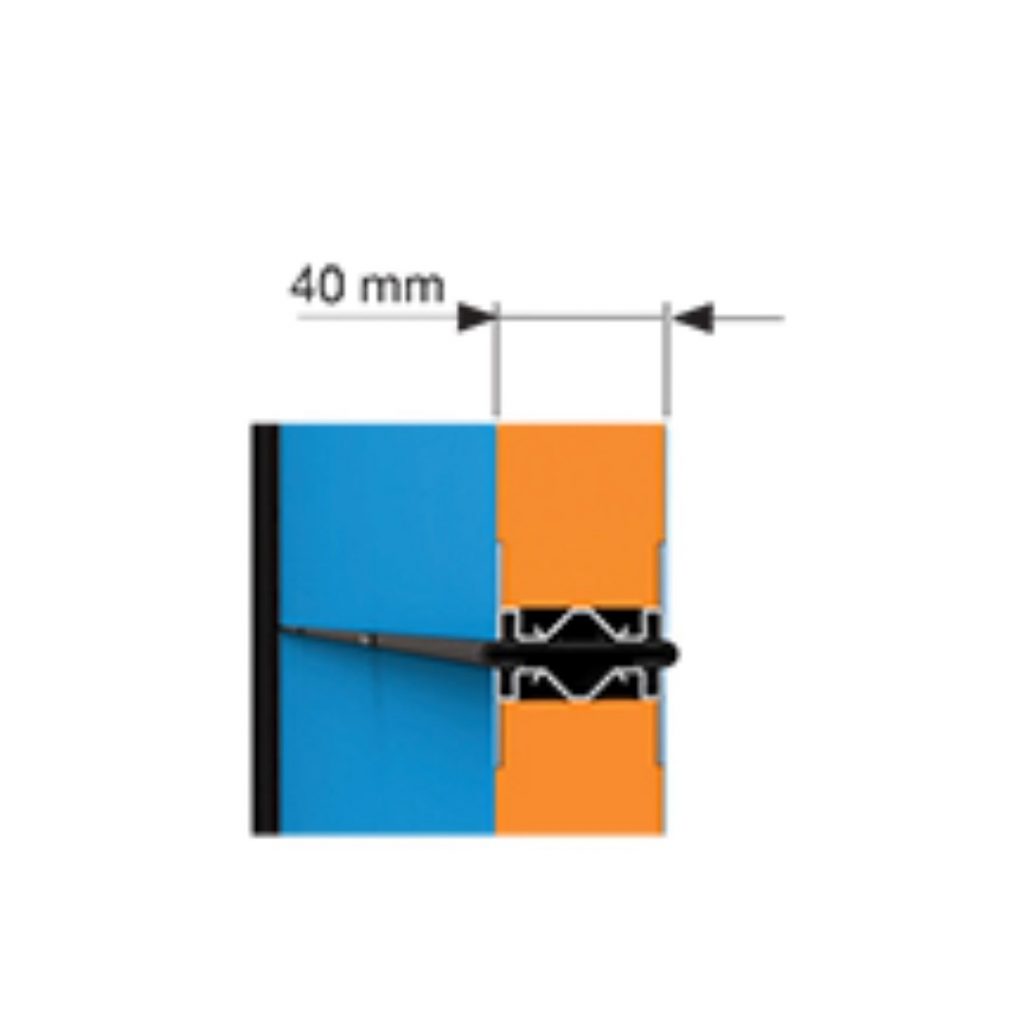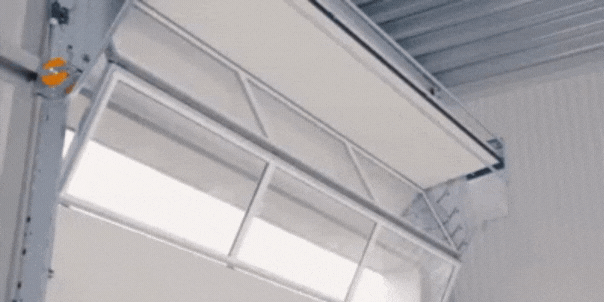When choosing a new industrial or commercial door, many people ask: how thick is an overhead door? The answer depends on the type of door, the materials used, and how much insulation or durability your building requires. In this article, we’ll explain the typical thickness of overhead doors, what influences it, and how the Compact industrial door offers excellent insulation and a space-saving design without the bulk of a traditional overhead system.
Typical thickness of overhead doors
Most overhead doors are built using sectional panels made of steel, aluminium or composite materials. The average panel thickness ranges from 20 mm to 45 mm, depending on the model and purpose.
- Non-insulated doors (often used for basic storage or agricultural buildings) tend to be 20–25 mm thick.
- Insulated doors designed for industrial or commercial use are usually 40–45 mm thick, offering better thermal and acoustic protection.
- Heavier insulation: Thicker panels, such as 60 mm or 80 mm, are used for improved thermal performance in colder climates or industrial settings.
Thicker panels generally mean better insulation and greater strength, but they also add weight to the door system, which can increase wear on torsion springs and require more maintenance.
Why insulation thickness matters
The thickness of an overhead door directly affects the energy efficiency and comfort of your building. In heated warehouses, workshops or showrooms, choosing a door with insulated panels helps maintain a stable indoor temperature and reduces energy costs. Insulated panels typically contain a polyurethane or foam core, which increases the door’s thermal resistance (measured in U-values). The lower the U-value, the better the insulation performance.
Thicker panels also insulate sound, making them ideal for buildings close to busy roads or noisy industrial areas.
Space and design considerations
While thicker, insulated doors offer clear advantages, they can also take up more space — both in terms of panel size and the ceiling tracks required for operation. Traditional overhead doors slide under the ceiling, which limits space for lights, ventilation systems or cranes.
That’s where the Compact door stands out.
The Compact door: efficient insulation without bulky tracks
The Compact folding door is a sectional industrial door with a unique folding system. Instead of sliding under the ceiling, its panels fold neatly above the doorway, keeping the ceiling completely free. Despite this compact design, the Compact door offers excellent insulation — its panels are 40 mm thick, filled with high-quality insulation material for both thermal and acoustic protection.

This makes it as space-efficient as a roller shutter, but with the insulation and visual quality of a modern overhead door. You can also customise the Compact door with windows, translucent panels or even an integrated wicket door, combining performance with style.
Conclusion
So, how thick is an overhead door? Most standard models range between 20 and 45 mm, depending on insulation and design. For models with Heavier insulation the range is 60 mm or 80 mm, they are used for improved thermal performance in colder climates or industrial settings. If you need a door that provides strong insulation without taking up valuable ceiling space, the Compact door is the ideal solution. With its 40 mm insulated panels and innovative folding mechanism, it delivers the perfect balance of efficiency, space savings and modern design — built for today’s industrial and commercial buildings.

